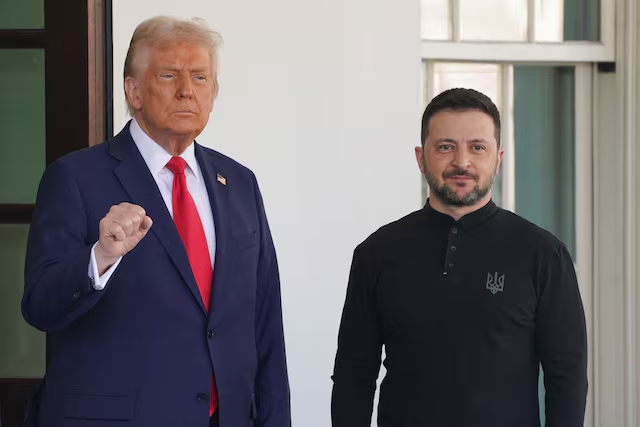Russian President Vladimir Putin and U.S. President Donald Trump held a phone conversation on Monday, May 19, 2025, in which they discussed the state of U.S.-Russia relations and expressed optimism about what the Kremlin described as “impressive prospects” for future cooperation. The call, initiated amid ongoing global efforts to end the war in Ukraine, marked the most direct engagement between the two leaders since Trump returned to office.
According to a statement released by the Kremlin, the conversation focused primarily on ways to de-escalate the war in Ukraine, revive bilateral diplomatic channels, and explore new opportunities for economic and strategic cooperation. The Kremlin characterized the exchange as “constructive and forward-looking,” with both sides agreeing that U.S.-Russia relations had the potential to be “substantially improved.”
“President Putin and President Trump noted the impressive prospects for restoring full-scale bilateral cooperation in the spirit of mutual respect and strategic balance,” the Kremlin statement read.
The White House confirmed that the call took place but offered a more cautious summary, saying that President Trump reiterated the U.S. commitment to NATO, the defense of Ukraine’s sovereignty, and a desire for peace through strength. Officials emphasized that Trump did not make any concessions but was “open to pragmatic dialogue.”
The timing of the conversation is significant. Trump has made ending the Ukraine war a foreign policy priority, previously pledging to “stop the war in 24 hours” if elected. Monday’s call is seen as part of his larger strategy to position himself as a mediator in the ongoing conflict. Kremlin aides reportedly welcomed the tone of the conversation, contrasting it with the confrontational stance of Trump’s predecessor, President Biden.
While no concrete agreements were announced, the Kremlin suggested that working groups could be established to address arms control, economic sanctions, and security issues in Eastern Europe. Russian media portrayed the call as a diplomatic breakthrough, with state-run outlets highlighting Trump’s willingness to “listen” and “respect” Russia’s concerns.
However, critics in the U.S. and Europe voiced alarm over the call, questioning whether Trump’s overtures could undermine Western unity and Ukraine’s negotiating position. Several members of the U.S. Congress warned against any backchannel deals that might reward Russia’s aggression or weaken NATO commitments.
“Engagement must not come at the cost of accountability,” said Senator Chris Murphy, a member of the Senate Foreign Relations Committee. “We must not allow Putin to reset the rules of international conduct.”
Meanwhile, Ukrainian President Volodymyr Zelenskyy, who was briefed about the conversation, welcomed any serious dialogue that could lead to peace but reiterated his stance that Ukraine’s territorial sovereignty is non-negotiable. Zelenskyy is expected to speak with both Trump and European leaders in the coming days to ensure that Ukraine remains fully represented in any potential diplomatic process.
European allies, including Germany and France, responded cautiously to the Putin-Trump call. While acknowledging that dialogue is necessary, EU officials stressed the importance of maintaining a unified approach to sanctions and diplomatic strategy. NATO Secretary-General Jens Stoltenberg reaffirmed that any talks involving Russia must include transparency and allied coordination.
Monday’s phone call comes just days after Russia launched one of its largest drone attacks on Ukrainian cities since the start of the war, further complicating the diplomatic backdrop. Yet, the Kremlin’s warm rhetoric following the call underscores Russia’s eagerness to engage with the Trump administration in hopes of resetting relations and easing isolation.
As preparations continue for a possible high-level peace summit involving Ukraine, Russia, the U.S., EU, and UK, Monday’s conversation signals that direct dialogue between Washington and Moscow may once again play a central role in shaping the trajectory of one of the world’s most dangerous conflicts. Whether that leads to meaningful progress — or new geopolitical fault lines — remains to be seen.



